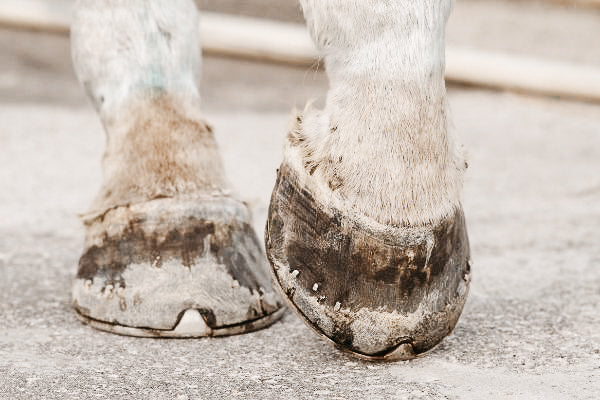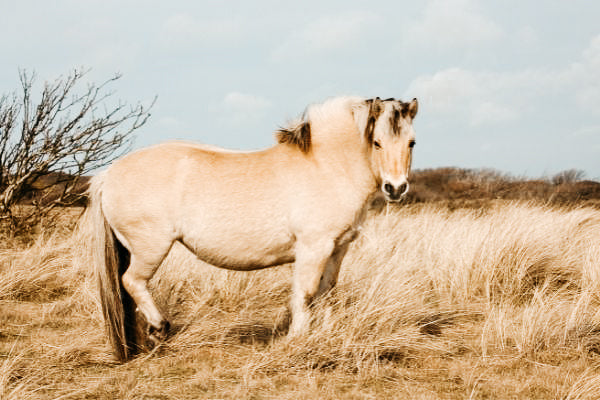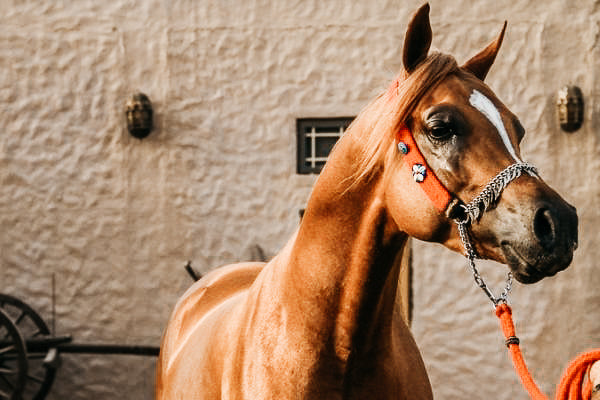
Hoof cancer – one word, one feeling of fear
Diagnosis of hoof cancer. This makes horse owners swallow hard. Not without reason. This rampant disease can have tragic consequences. But there is hope. The latest findings are encouraging. A number of patients have already recovered and beat this hoof disease. We don't want to withhold from you the details behind it, as well as a precise description of the horse disease.
What exactly is hoof cancer?
Well, actually, hoof cancer (often called frog cancer, wall cancer or sole cancer depending on the location) is not a real cancer (carcinoma). Metastases, which are the norm in cancer, are not formed. No cancer cells can be detected.
It is rather a cauliflower-like growth that covers the hoof skin (e.g. b Frog, sole, corner struts) and sometimes even the pads can change like a cancer. This skin forms pathologically spongy material that is highly sensitive. Even the slightest touch causes bleeding.
Germ layers form extremely smelly horn, which quickly ignites. Logical, since the open tissue can absorb all bacteria. There's even a "superword" for this disgusting horn formation disorder. Parakeratosis.
The consequences:
- initial sensitivity, later severe lameness due to severe pain
- Deformations of the hoof
- Bleeding
- Coffin bone lowering/coffin bone rotation until shoeing possible
- Coronal margin breakthrough (due to upward migration of the cancer)
- in the worst case, death sentence
Causes
It was previously assumed that radiation cancer only arose from pre-existing radiation decay. However, this could be refuted. Bacteria, viruses, etc. are not the only ones responsible for this.
In fact, metabolic disorders, toxic impairments and severe mineral deficiencies (everything can be checked in the horse clinic) can be the causes. Even incorrect hoof balance and especially feeding can play a role.
Many cold-blooded or thoroughbred horses are hoof cancer patients. A closer look at their vitamin supply is a must! There is often a significant undersupply of minerals/vitamins. At the same time, excessive amounts of muesli or concentrated feed are fed. In any case, the feeding history should be followed up.
A change in feed can also have a positive effect. Factory feed (with preservatives, high sugar content, flavors.) harms the organism!
The affected animal really needs to be “screened”. This means that several factors can come into play. Perhaps poor liver values, nutrient deficiencies, hyperacidity, skin problems and a lack of exercise or housing conditions that need improvement, etc.
Sometimes one complements the other.
The diagnosis
Hoof cancer is diagnosed by a veterinarian. The biopsy and subsequent histological examinations can confirm that the horse disease is serious. This is important because in the early stages this condition can resemble another hoof disease.
If the diagnosis is clear, rapid action is required. Collaboration between the owner, veterinarian and farrier or hoof orthopedist is a prerequisite, makes sense and is very helpful. The proximity to a horse clinic is advantageous. If you are admitted as an inpatient, specialists are always on site and can provide help quickly. The sterile environment is also a plus.
The procedure
As already mentioned, haste is essential. In technical jargon we speak of: aggressive therapy. This includes immediate surgical removal of all altered parts of the horn. And that can be a lot. If, for example, corner struts are affected, large parts must be removed or hollowed out deep into the hoof. Not pretty, but necessary.
This procedure usually only requires sedation of the animal. It can be treated while standing. The leg is locally anesthetized.
The horse then receives a hoof bandage. Initially it changes daily. Later every few days. The vet will then prescribe various medications to change the dressing. These are usually painkillers, antibiotics and disinfectant solutions.
Furthermore, a regular assessment by the veterinarian and the farrier must take place. Some blacksmiths use lid irons. These close the hoof, but still allow treatment and enable the patient to move again. Because: exercise is important! It activates blood circulation and promotes healthy horn growth. Disadvantage of iron lids: Hoof disease can progress further underneath.
Many horses also showed a significant improvement after medical surgery as a result of a skilled hoof orthopedist or barefoot trimmer. Without iron, mind you! At the same time, the owner must continue to take extremely careful care of the bandages, tamponades and disinfectant washes.
Yes - it's a huge effort. And yes - it takes time and money and requires enormous consistency. But, and this is much more important, many horses have actually survived this hoof disease and were able to be treated. So it is curable.
The earlier the suffering is recognized, the quicker the animal can be healed. If the hoof disease was treated early in the early stages, the chances are quite good that healthy horn will regenerate within a few weeks. In more difficult cases of radiation cancer, several months can pass, including admission to a horse clinic and countless appointments with the farrier.
What does this tell us?
The conclusion is clear: prevention is the best measure!
If you want to protect your treasure from horse disease, only one thing is important. YOU have to meet the needs of such a wonderful animal.
In other words: species-appropriate husbandry conditions (e.g. b Open stables/herd keeping) enable sufficient exercise (in the form of work and free running, e.g. b during paddock walking), provide a social environment, ensure a good supply of minerals (organically bound) and carefully selected (natural) food, as well as cleaning the fur and hooves every day.
If you take your job seriously, you will only see your vet again for vaccinations. That's how it should be, right?
Discover more posts

Norwegian Fjord horses – the pretty duns of the far north
There is hardly anyone who doesn't like the look of the compact ponies. The little Norwegians with their cheeky standing mane are actually more popular than ever. Among horse breeds,...
Continue reading
Arabians – noble beauties with an extra dose of stamina
Many myths are told about the origin of the Arabian horse. You probably know the sentence: God took a handful of wind and created the Arabian horse. Definitely heard, right? These and other le...
Continue reading
